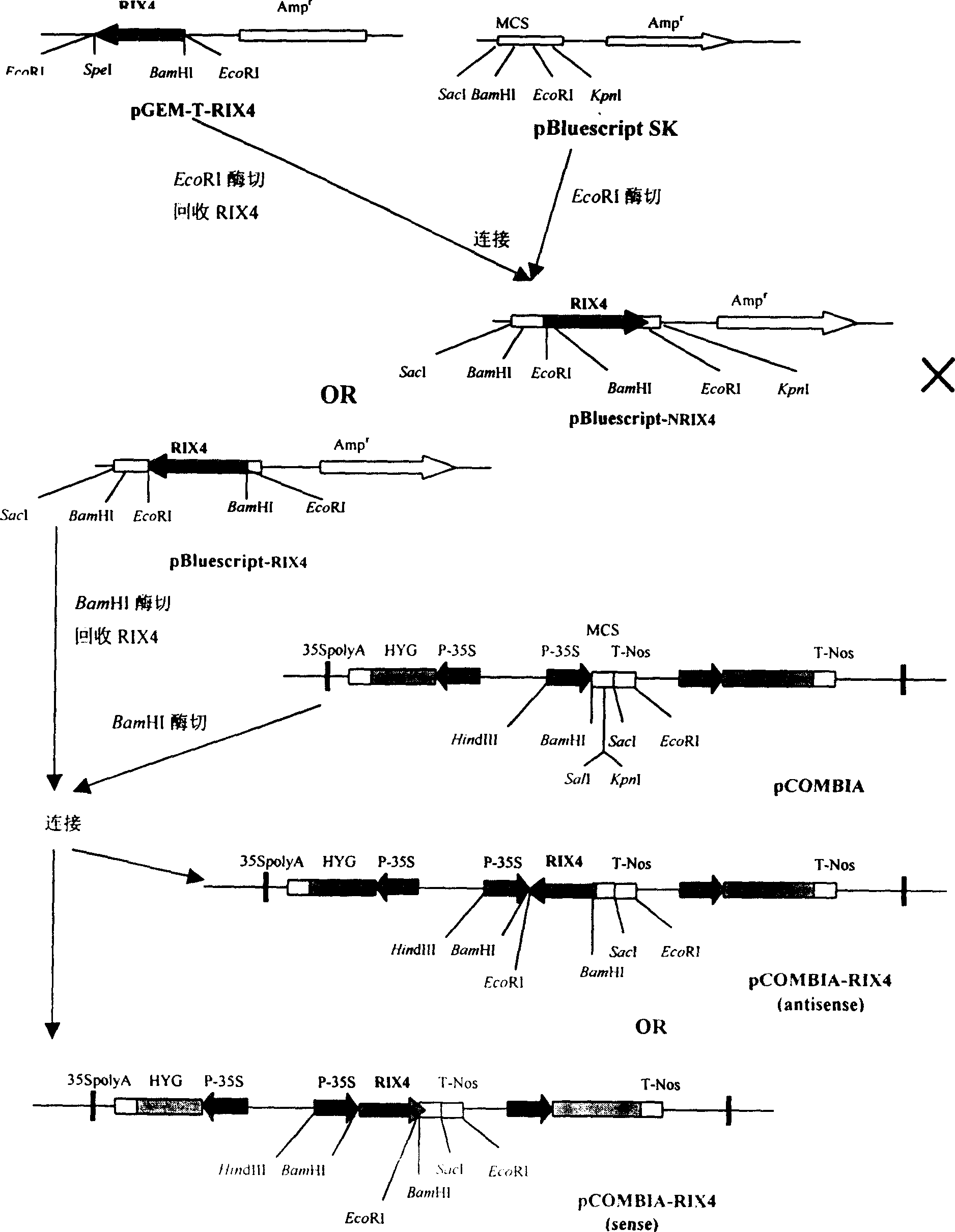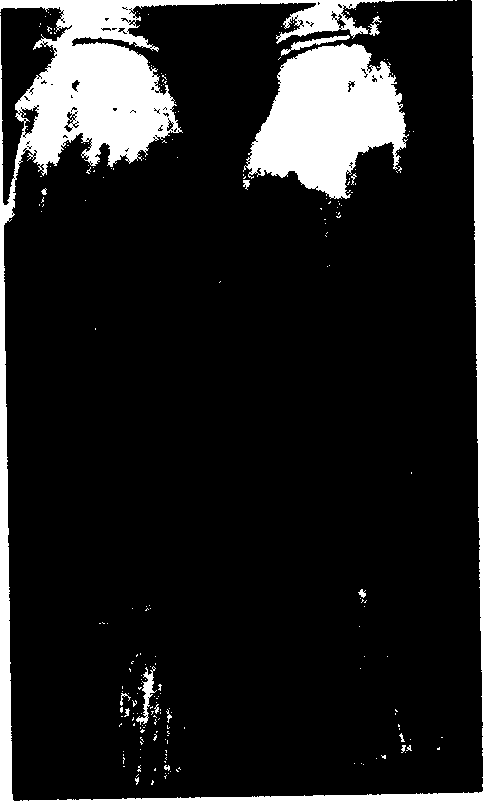Bacterial leaf spot resistance related gene of rice, protein and its uses
A blight resistance, rice technology, applied in genetic engineering, plant genetic improvement, application, etc., can solve problems such as unclear biological functions
- Summary
- Abstract
- Description
- Claims
- Application Information
AI Technical Summary
Problems solved by technology
Method used
Image
Examples
Embodiment 1
[0087] Example 1 Cloning of RIX-4 Gene
[0088] Extraction of rice total RNA by one-step guanidine isothiocyanate / phenol / chloroform method. Poly(A+) mRNA was isolated from total RNA species using the Quick mRNA Isolation Kit (Qiagene). 2 μg poly(A) mRNA was reverse transcribed to form cDNA. The cDNA fragment was directional inserted into the multiple cloning site of the pBS SK(+) vector (Clontech) with the Smart cDNA Cloning Kit (Clontech), and transformed into DH-5α competent cells to form a cDNA library. The sequences of the 5' and 3' ends of all clones were determined with Dye terminate cycle reaction sequencing kit (promega, U.S.A.) and Megabase1000 sequencer. Comparing the determined cDNA sequence with the Genbank database, it was found that the cDNA sequence of one of the clones was a new DNA. The insert cDNA fragment contained in this clone was determined bidirectionally by synthesizing a series of primers. The results showed that the full-length cDNA contained in t...
Embodiment 2
[0089] Example 2 Cloning of the RIX-4 gene encoding the RIX-4 polypeptide by RT-PCR
[0090] The calluses of rice resistant variety (IR26) and susceptible variety (King Kong 30) were treated with Xanthomonas oryzae pv.oryzae, and total RNA was extracted respectively (strictly according to Trizol Kit instructions require operation) as the template for the reverse transcription reaction, perform the reverse transcription reaction to synthesize cDNA according to the following system:
[0091] The primers are:
[0092] Primer1: 5'-GGCCACGCGTCGACTACTTTTTTTTTTTTTTT-3'(3' (for reverse transcription));
[0093] Primer2: 5′GGCCACGCGTCGACTACGGGGGGGGGG 3′(5′ (for reverse transcription))
[0094] Primer3: 5′-GGCCACGCGTCGACTAC-3′(3′ (for amplification))
[0095] Primer4: 5′-GGCCACGCGTCGACTAC-3′(5′ (for amplification))
[0096] The process is 100ng / μl 3'5' 2.5μl, RNA 5μl (about 200ng), 5μl DEPC-H 2 After O mixing, bathe in water at 70°C for 5 min and ice bath for 5 min; add 6 μl of 5...
Embodiment 3
[0099] Example 3 Analysis of RIX-4 gene expression by Northern blotting
[0100] Total RNA was extracted by a one-step method (Anal. Biochem. 1987, 162. 156-159). The method includes acidic guanidinium isothiocyanate-phenol-chloroform extraction. That is, use 4M guanidine isothiocyanate-25mM sodium citrate, 0.2M sodium acetate (pH4.0) to homogenate the tissue, add 1 times the volume of phenol and 1 / 5 volume of chloroform-isoamyl alcohol (49:1 ), mixed and centrifuged. The aqueous phase was aspirated, isopropanol (0.8 vol) was added and the mixture was centrifuged to obtain an RNA pellet, which was washed with 70% ethanol, dried and dissolved in water. 20 µg of RNA was electrophoresed on a 1.2% agarose gel containing 20 mM 3-(N-morpholino)propanesulfonic acid (pH 7.0)-5 mM sodium acetate-1 mM EDTA-2.2M formaldehyde. Then transfer to nitrocellulose membrane. with α- 32 P dATP prepared by random primer method 32 P-labeled DNA probes. The DNA probe used was the sequence of ...
PUM
 Login to View More
Login to View More Abstract
Description
Claims
Application Information
 Login to View More
Login to View More - R&D Engineer
- R&D Manager
- IP Professional
- Industry Leading Data Capabilities
- Powerful AI technology
- Patent DNA Extraction
Browse by: Latest US Patents, China's latest patents, Technical Efficacy Thesaurus, Application Domain, Technology Topic, Popular Technical Reports.
© 2024 PatSnap. All rights reserved.Legal|Privacy policy|Modern Slavery Act Transparency Statement|Sitemap|About US| Contact US: help@patsnap.com










